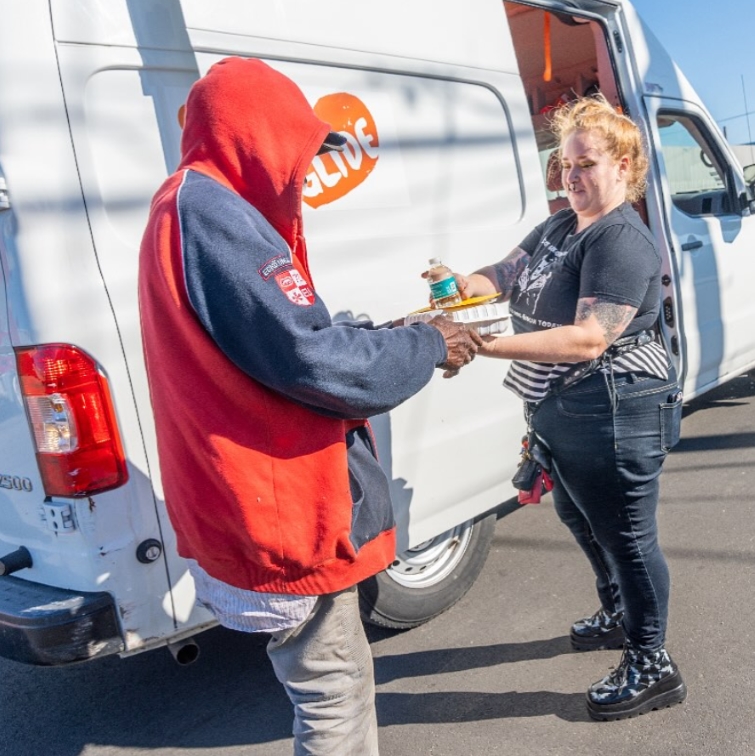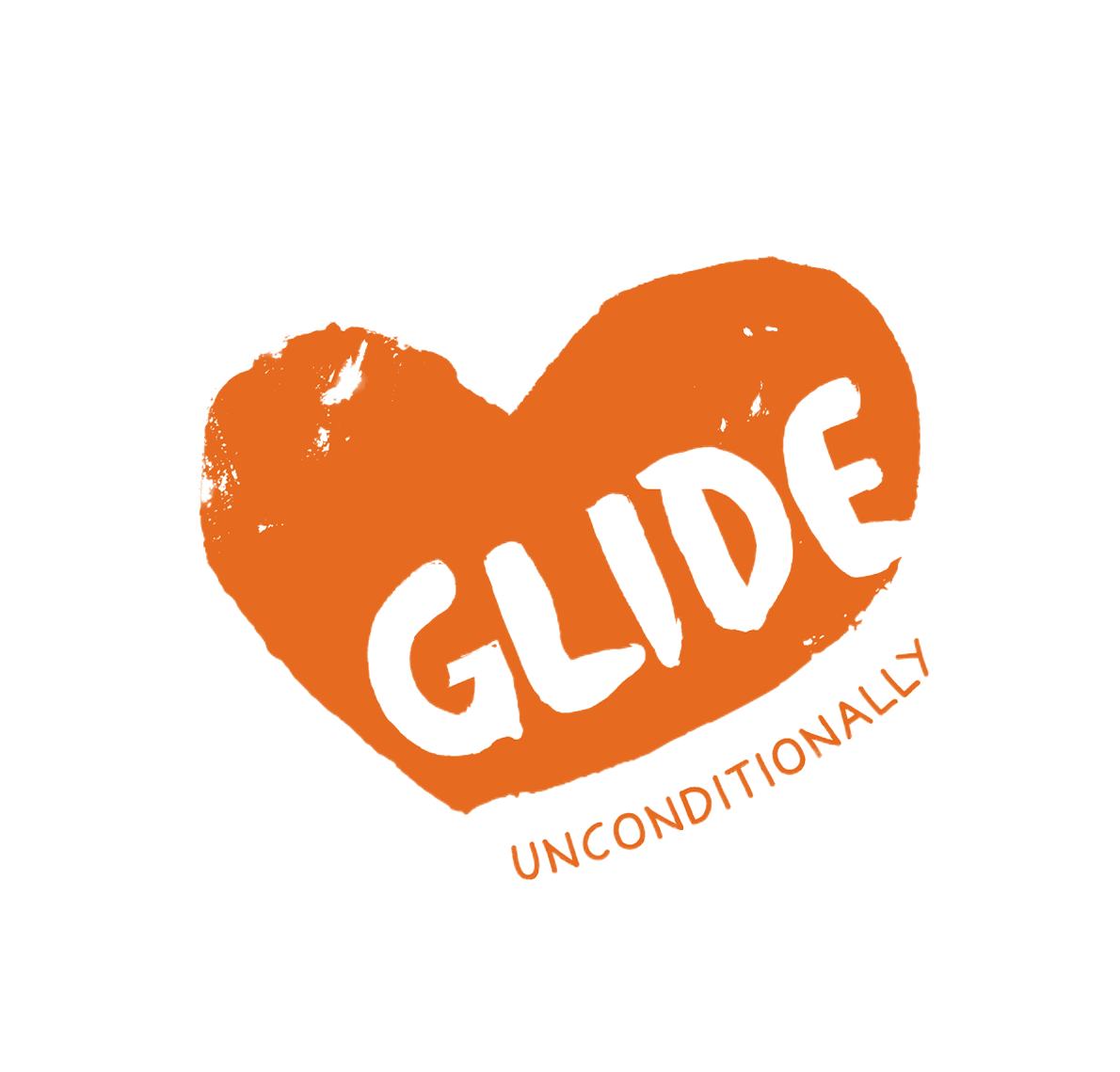
Contingency management might sound like complex bureaucratic jargon. But the core tenant of the program is simple: reward people for making healthier choices.
“Looking to change your stimulant use? Want to earn gift cards for reaching your goals?”
That’s the message printed on flyers decorating GLIDE’s lobby, advertising the new Contingency Management Program that began in September.
Over the course of 3 months, participants hoping to break free from addiction to drugs like methamphetamine, amphetamines, or cocaine will participate in individual and group programming at GLIDE. In exchange, they can receive up to $555 in gift cards for successful completion of sobriety milestones.
It’s a method of treating drug use that’s scientifically backed and proven to work, evidenced by numerous studies over the past 30 years.
“It’s a good way to give people something measurable to check off. We try to be flexible,” explains Whit Bastian, the Operations Manager for GLIDE’s Health Access and Empowerment Team (HEAT). “If someone is struggling with substance use, and they know they’re not going to be perfect, they can at least start to think about what stopping their substance use might feel like.”
What is Contingency Management?
Contingency management (CM) is an evidence-backed substance use disorder treatment. The program provides incentives or rewards (like gift cards) to people who exhibit positive behavioral change (like reducing drug use).
CM has also been used for other behavioral changes, not just substance use treatment. GLIDE’s Senior Director of Health and Clinical Services, Jason Finau, has seen contingency management used in outpatient clinics and other non-profit organizations. “I’ve used contingency management in medication adherence,” says Finau, detailing a program that worked with people struggling to manage their HIV medication. “Overall we saw a lot of success. By the end of the program, there was a significant improvement in medication management.”
Behavioral science has proven time and time again that positive reinforcement can be a powerful motivator for behavioral change – like getting a gold star on a chore chart as a kid. As we see in many recovery efforts, recovery is not a one-size-fits-all approach. Contingency management might not work for everyone, but it can be extremely effective for some.
A Day in the Contingency Management Program
The program runs for 12 weeks, with participants meeting at GLIDE 3 times a week (Monday, Wednesday, and Friday). Each day includes 3 parts: a urinary analysis, a one-on-one check in with a case manager, and group therapy.
First, participants take a urinary analysis – more commonly known as a pee test. If someone’s UA is negative for stimulants, they receive a gift card reward. If the test is positive, they don’t get the reward that day, but they’re still encouraged to attend group and 1:1 sessions. There’s no judgment, no punishment, and no dismissal from the program.
Gift card amounts increase with each consecutive negative test. The first incentive is $5. After six times in a row testing negative, participants move up to the $10 gift card amount. If someone tests positive, they are dropped back down to the lowest incentive level until they build up their negative streak again. Then they can return to the highest level they previously achieved.
Participants can also earn incentives for meeting health-related goals like going to the dentist, getting new glasses, or completing a Hep C screening — up to $10 per goal, with a cap of three goals.
Next, participants have a one-on-one check-in with a case manager at GLIDE. Case managers help monitor individual needs and connect participants with other services at GLIDE.
Finally, participants engage in group therapy with everyone else in the CM Program.
The Power of Group Therapy
Case manager check-ins and group therapy are not incentivized, but many choose to stay for them anyway.
One of the big goals with contingency management is just getting people in the door. And at GLIDE, the power of CM goes beyond the gift cards. The real engine of transformation is community.
“Group therapy is the big intervention,” says Whit Bastion. “You start to make more friends who have the same goal as you.”
Jason Finau agrees: “People might first be coming for the incentive. But the more they come back, the more they feel seen. The group gives them a space to talk about grief, anxiety, depression — and to know they’re not alone.”
This kind of peer connection can be life-changing.
A New Tool in Treating Stimulant Use
GLIDE’s contingency management program focuses specifically on treating stimulant use, not opiate use.
Although the opioid crisis and the increase of fentanyl-related deaths get the most political coverage, studies have shown that methamphetamine and other stimulants are the most commonly used drugs among unhoused people. Many people on the street use stimulants to stay awake at night and protect themselves against violence or getting their belongings stolen.
And though GLIDE’s program is limited to stimulant use, the participants are tested weekly for the whole spectrum of drugs. That way, case managers know if participants are taking other drugs in addition to stimulants and can respond appropriately.
Bastian agrees that monitoring client needs is a crucial piece of what the program does. “We want to present ourselves as people who care, as people who won’t judge. When people feel that they can’t talk to you about their drug use, that’s when the overdose deaths occur.”
Looking Ahead
The CM program launched in September and is still growing. With the recent hiring of two case managers — both with lived experience — the team is gearing up for expanded outreach and engagement.
Jason Finau hopes to see a larger program expansion in 2026. “We’re hoping to get groups of up to 25 participants at a time,” he explains. “After folks graduate from the program, I want them to stay involved, maybe even come back as peer leaders for the new groups.”
Contingency management isn’t a cure-all. But it’s compassionate, data-driven, and it’s already working for many in our community.
If you or someone you know is using stimulants and looking for a path toward stability, GLIDE’s CM program offers more than just a reward. It offers connection. It offers support. It offers hope.
